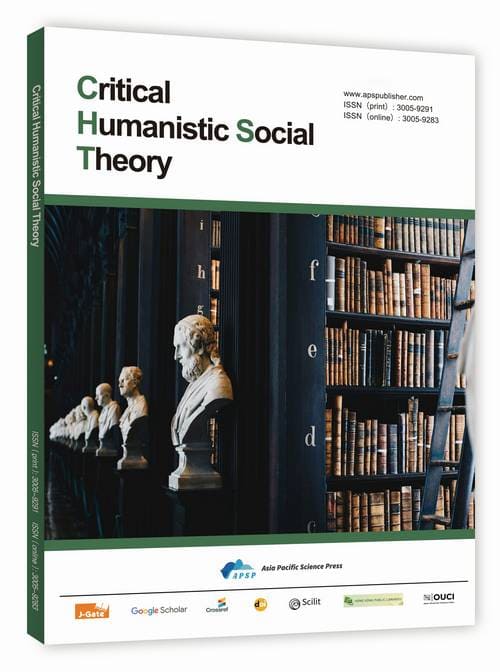Costume Semiotics and Cultural Construction in East Asian Historical War Films: A Comparative Analysis of Roaring Currents, Red Cliff, and Ran
DOI:
https://doi.org/10.62177/chst.v2i4.659Keywords:
Film Costume, Semiotics, Historical War Films, Identity, Power, Cultural Symbolism, East AsiaAbstract
This study explores the semiotic dimensions of costume in East Asian historical war films, focusing on the Korean film Roaring Currents (2014), the Chinese film Red Cliff (2008), and the Japanese film Ran (1985). By integrating Barthes' "signifier–signified" model with Peirce's triadic semiotic framework of iconicity, indexicality, and symbolicity, the research examines how costumes function as visual signs that mediate identity, power, and cultural values.
The analysis demonstrates that in Roaring Currents, costumes highlight the tension between practicality and heroism, reinforcing narratives of national resistance and collective sacrifice. In Red Cliff, costume design balances historical accuracy and artistic stylization, visually articulating political power structures and cultural identities among the Three Kingdoms. In Ran, the symbolic use of armor and color coding conveys themes of fatalism, clan disintegration, and philosophical reflection, transforming costumes into theatrical metaphors.
Comparative findings reveal that costume semiotics operates across three key dimensions: (1) identity construction through differentiation of rank, class, and gender; (2) representation of power via materiality, ornamentation, and hierarchical design; and (3) cultural signification through color systems, symbolic motifs, and ideological codes. While each national cinema emphasizes distinct thematic priorities—heroic resistance in Korea, political-military order in China, and fatalistic aesthetics in Japan—all three employ costume as a multilayered semiotic system that transcends mere historical reproduction.
This research contributes theoretically by positioning film costume as a core subject of cultural studies rather than a subsidiary of visual art, expanding semiotic analysis into the interdisciplinary field of costume studies. Practically, it underscores the role of costume in shaping national identity, collective memory, and cultural discourse, demonstrating its value as a medium of aesthetic expression and soft power.
Downloads
References
Kim, H. J. (2012). Representation and meaning of war in films. Journal of the Korea Contents Association, 12(11), 100–109.
Koong, K., & Lee, T. H. (2015). A semiotic analysis of film contents: Focusing on Bong Joon-ho's films. Journal of Basic Design & Art, 16(6), 39–48.
Kim, E. J. (2014). Fantasy in film costumes of Alice in Wonderland: Based on literary fantasy theory. Fashion & Textile Research Journal, 16(1), 26–34. https://doi.org/10.5805/SFTI.2014.16.1.26
Ryu, S. H., & Noh, J. H. (2013). Trends in Korean film costume research according to classification systems. Design Knowledge Journal, (28), 131–142. https://doi.org/10.17246/jkdk.2013..28.013
Shin, H. W., & Kim, H. R. (2014). Trends of domestic research on film costume. Journal of the Korean Society of Costume, 64(7), 1–17.
Lee, H. Y., Lee, S. H., & Lee, Y. S. (2002). Analysis of film costumes by role: Focused on Gone with the Wind. Journal of the Korean Society of Costume, 10(6), 648–665.
Lee, Y. K., & Kang, H. S. (2016). Women's fashion in late 1930s Joseon films: Focusing on Military Train and Eohwa. Journal of Communication Design, 54, 160–170.
Ju, Y. S. (2012). Discourses on national cinema: Its meaning and issues. Contemporary Film Studies, 8(2), 197–222.
Jin, J. H. (2024). Costume design and character image in the film Red Cliff. Art Education, (3), 245–248. https://doi.org/CNKI:SUN:YSJY.0.2024-03-057
Ni, H. B. (2009). Historical, literary, and visual perspectives: A brief analysis of costume design in Red Cliff. Film Review, (9), 32. https://doi.org/10.16583/j.cnki.52-1014/j.2009.09.042
Zhou, J. W. (2016). Study of women's costumes in Ye Jintian's historical films (Master’s thesis, Southwest University). Retrieved from CNKI database.
Tian, L. L. (2024). Form exploration and concept construction in early Chinese film costumes. Film Art, (5), 124–131. https://doi.org/CNKI:SUN:DYYS.0.2024-05-019
Xie, Z. (2015). On the visual communication effect of film costume. Contemporary Cinema, (8), 155–158. https://doi.org/CNKI:SUN:DDDY.0.2015-08-034
Tang, N. N. (2018). A study of Akira Kurosawa’s films: Focused on Shakespearean adaptations. Journal of the Japan Society of Image Arts and Sciences, 72(4), 45–59.
Harada, N., et al. (2001). Development of contemporary Japanese society as seen in films: Focusing on the 1960s–1980s. Bulletin of Sapporo University Women's Junior College, 37, 127–183.
Barthes, R. (1977). Image, music, text (S. Heath, Trans.). London: Fontana Press.
Peirce, C. S. (1998). The essential Peirce: Selected philosophical writings, Volume 2 (1893–1913). Bloomington, IN: Indiana University Press.
Annila, P. (2014). Film costumes as icons: Three representations of a hero's iconic film costume. Journal of Visual Culture, 13(2), 77–93.
Honeycutt, L. D. (2021). A semiotic approach to visual analysis of dress: Symbolic communication of clothing color, cut, and composition through the French film costumes of Anais Romand (Doctoral dissertation). Louisiana State University.
Vojković, J. (2020). Film costume as a visual narrative element: Defining the abstract emotions of the film viewer via Plutchik's wheel of emotions. Textile & Leather Review, 3(2), 92–100.
Downloads
How to Cite
Issue
Section
License
Copyright (c) 2025 Hongxing Lu

This work is licensed under a Creative Commons Attribution-NonCommercial 4.0 International License.
DATE
Accepted: 2025-10-10
Published: 2025-10-20

















